| Vintage Pulp | Feb 14 2017 |

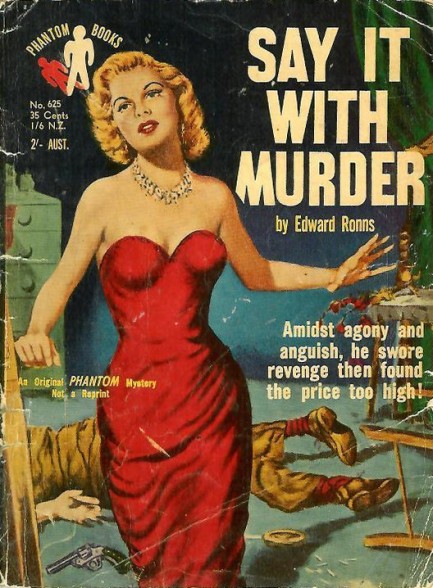
Tired of the rampant commercialism of Valentine's Day? So is the woman on the cover of Edward Ronns' 1955 thriller Say It with Murder. Too bad she doesn't live where we do, where there's no such holiday. This cover is from Australia's Phantom Books, a company we've been featuring often of late, and as we've mentioned, Phantom had a habit of using reconstituted art. You can see exactly what we mean by looking at the front of the 1954 Graphic Books edition, with its excellent work from Lou Marchetti. We still don't know exactly why Phantom changed its covers. A rights usage issue, we suppose. But if that's the case, why was the company able to get away with making near copies of the originals? We'll keep exploring this question until an answer presents itself.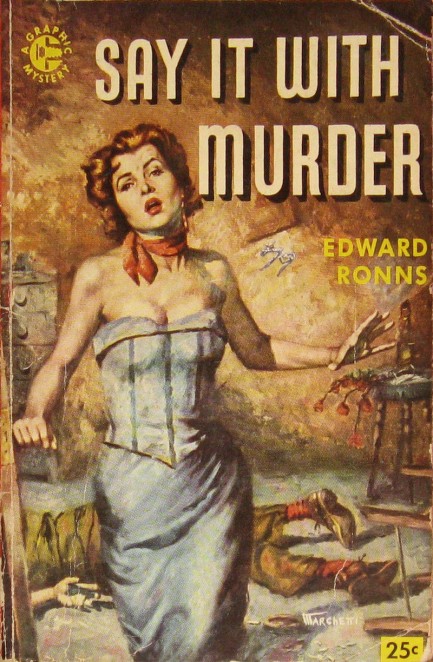
| Vintage Pulp | Oct 2 2016 |

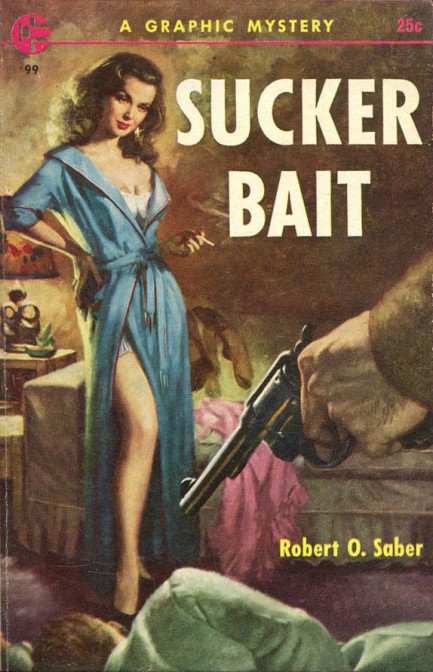
Above, the cover of Sucker Bait by Robert O. Saber, aka Milton K. Ozaki, 1955 from Graphic Books. Rich men pay $1,000 for entry into the Purple Door Club, where they procure the services of Chicago's most beautiful prostitutes, but also become targets for blackmailers. Hero Carl Good is accused of murdering one of the women and has to clear himself by finding the real killer. Good thing he's a detective. The cool cover art here is by Robert Maguire.
| Vintage Pulp | Sep 14 2016 |

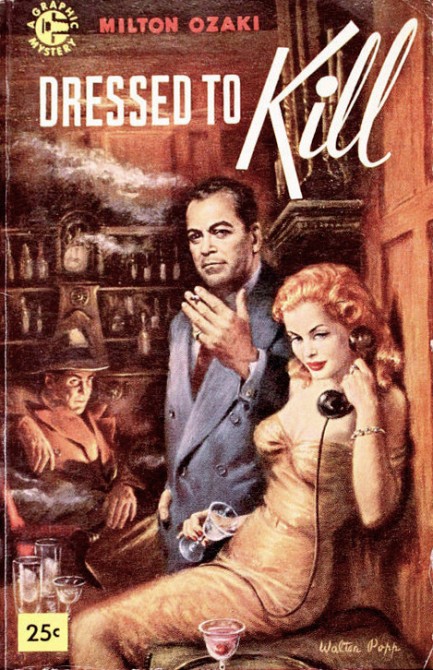
| Vintage Pulp | Feb 12 2015 |

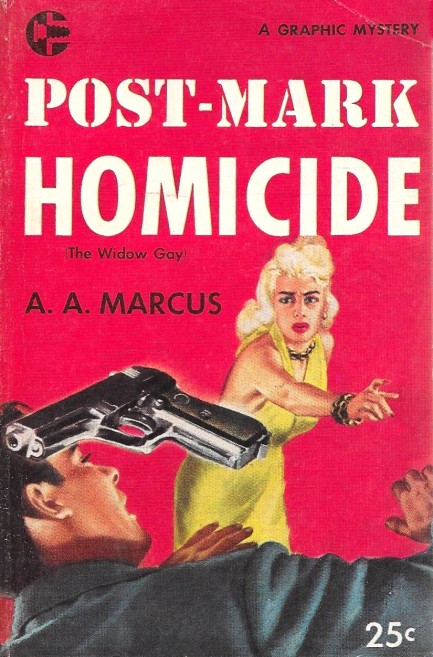
On this amusing cover from Graphic Books a surprised P.I. narrowly avoids a serious beaning from a woman who definitely doesn’t want to be his valentine. 1953’s Post-Mark Homicide originally appeared as The Widow Gay in 1950 with the same art, painted by unknown on both editions, sadly. The novel is these days published with the author credited as Arthur A. Marcus. So what happens here? A crooked D.A. needs to recover a set of incriminating letters, hires a studly P.I. to do it, who in turn has to deal with a recently widowed—like, earlier that day—but not exactly grieving gangster’s moll. This pistol-slinging move never worked in the movies, and it doesn’t work here either, but we always love to see it.
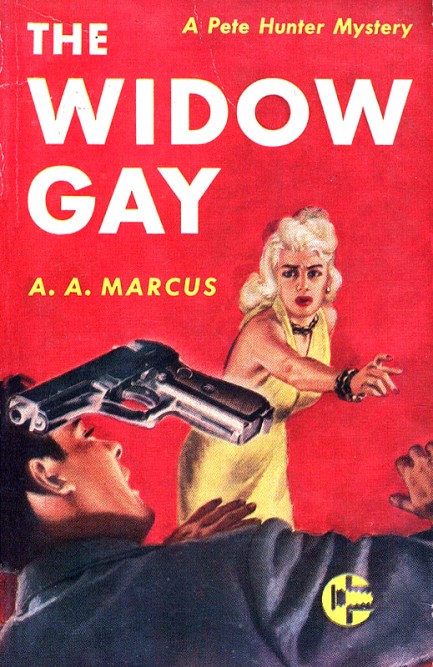
| Vintage Pulp | Nov 27 2014 |

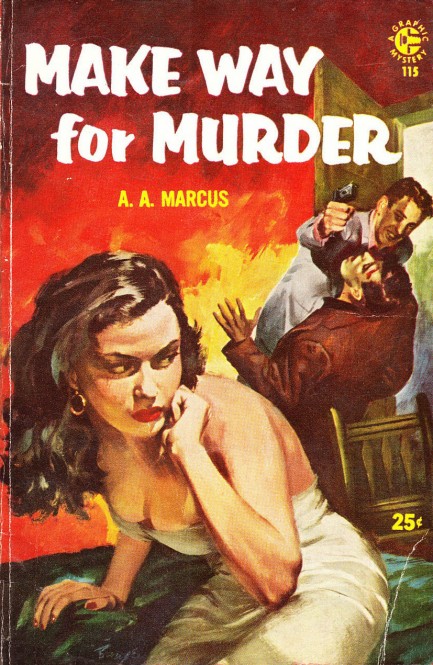
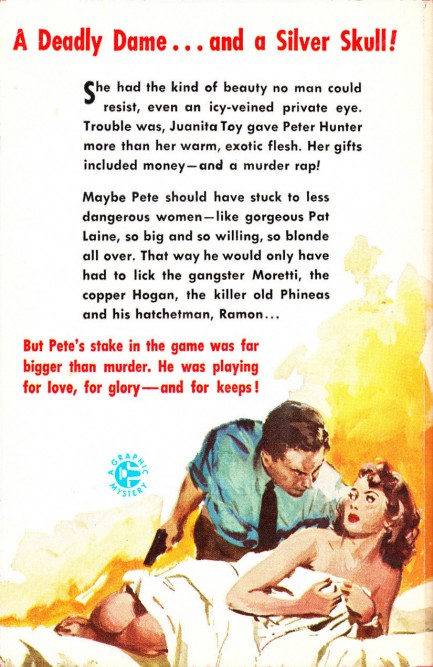
Above, front and rear cover art for A.A. Marcus’s Make Way for Murder, 1955. This was the first of four books in a series about private eye Peter Hunter. You can get a sense of what it’s about from the rear text. As for the artist, we checked a Graphic Books catalog, and of the 127 books they published Make Way for Murder is one of only a handful for which they don’t list artist information. At which point we thought what a shame, because he/she deserves recognition for this fiery tableau. And then we saw Barye Phillips’ signature. Front cover, lower left. Hey, we never claimed to be observant. As for why Graphic Publishing seemed to have missed it, no idea.




































































